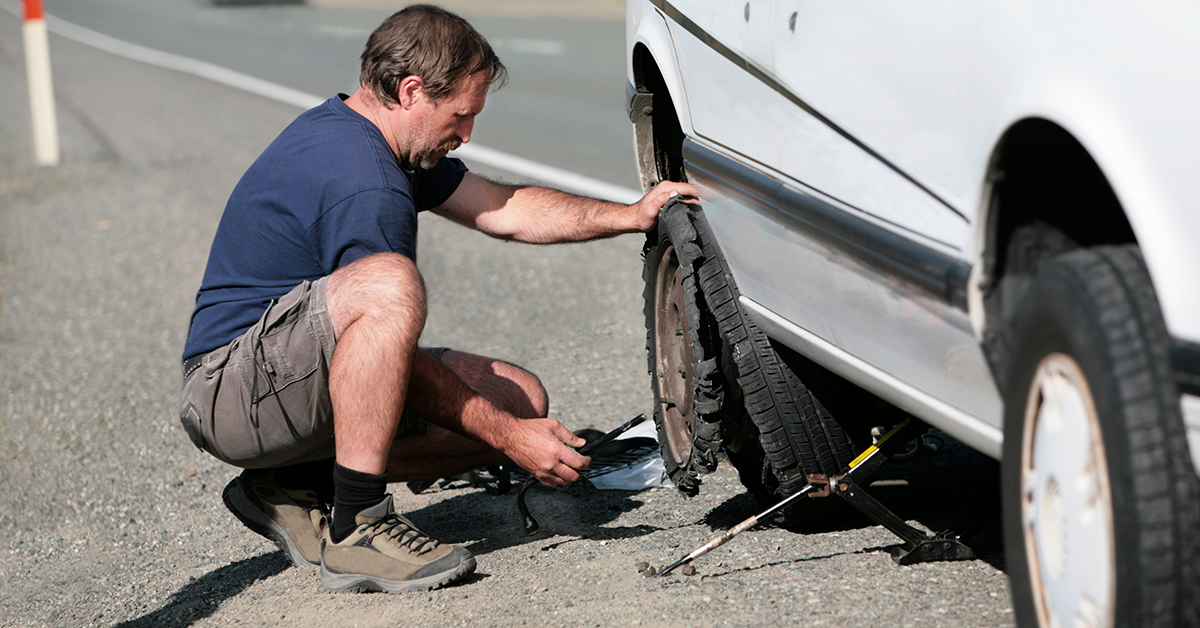5 ways to avoid a flat tire
5 ways to avoid a flat tire

As conditions grow warmer, it’s a good time to remind yourself of tire basics – from when to inflate them to how to care for them. A general understanding of these five tire topics can help you avoid a flat tire.
Know your proper tire inflation.
Tire inflation can and will vary based on not only the tire type and size but also the make of vehicle. Check the sticker located on the driver’s side doorjamb, or most tire retailers and automotive repair shops can look up the proper inflation specs for you. Newer vehicles also are equipped with monitors to alert you when the tire pressure is incorrect.
Check your tire tread.
The best way to check your tread depth is, of course, with an actual tread-depth gauge, but you can also use a penny. Place it in the tread with Lincoln’s head pointing down into the tire. If you are unable to see the top of Lincoln’s head, your tread is above the 2/32-inch depth, the lowest tread depth permitted in New York state. There is also a wear bar built into the tire for visual inspections. If the wear bar is flush with the remaining tread, it is less than 2/32 inch and the tire should be replaced.
Remove snow tires after winter.
In New York, studded snow tires are allowed between October and April 30. If you have regular snow tires without studs, there is no specific timeframe, but a good rule of thumb for removing them would be when the temperature is consistently above freezing each night, and the long-term forecast shows no threat of heavy snow.
Check your car’s alignment at least once a year.
You should get your alignment checked at least once a year, or every 12,000 miles. You’ll also want to do it when new tires are installed or if you notice your vehicle handling differently, such as pulling towards one side of the road. With the usual increase in potholes this time of year, it’s best to get your car’s alignment checked in the spring. You should also get it checked if you hit a lot of curbs, or slid off the road during recent winter weather.
Don’t forget the spare tire!
If your vehicle has a spare tire, it is a good idea to check it periodically to ensure that it is inflated, shows no sign of dry rot, and that the rim is free of rust and corrosion. A tire repair kit is a good thing to have in any vehicle. Most shops will check your tire pressure every time you get an oil change. Next time, ask them to check the spare tire, too.
AAA Western and Central New York completes about 56,000 flat tire calls each year. Don't get stuck on the road without AAA. Renew today!












